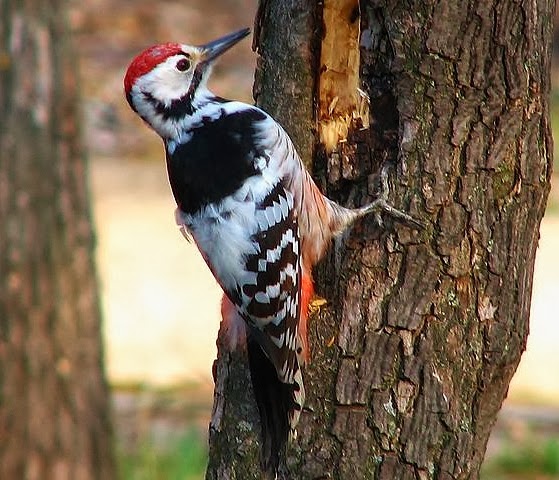 |
| (Photo from Pticyrus) |
Common name:
white-backed woodpecker (en); pica-pau-de-dorso-branco (pt); pic à dos blanc (fr); pico dorsiblanco (es); weißrückenspecht (de)
Taxonomy:
Order Piciformes
Family Picidae
Range:
This species is found from southern Scandinavia and eastern Europe, through southern Russia, northern Kazakhstan and northern Mongolia, and into north-eastern China, Korea and Japan. There are also isolated populations in southern China and Taiwan, Kamchatka, the Caucasus, in central Europa as far west as Switzerland and in the Balkans, Greece, Italy and southern France.
Size:
These birds are 25-28 cm long and have a wingspan of 38-40 cm. They weigh 100-115 g.
Habitat:
The white-backed woodpecker is mostly found in mature, deciduous forests, but also use boreal coniferous forests, moist tropical forests and inland wetlands and rivers. They are present from sea level up to an altitude of 1.850 m.
Diet:
They feed on wood-boring and bark-living insects, such as beetles and larvae, found in dead and decaying wood.
Breeding:
White-backed woodpeckers breed in February-July. They nest in a hole excavated by both sexes on a decaying tree, 1-20 m above the ground. There the female lays 3-5 eggs which are incubated by both sexes for 10-16 days. The chicks are mostly fed by the male and fledge 25-28 days after hatching.
Conservation:
IUCN status – LC (Least Concern)
This species has an extremely large breeding range and the global population is estimated at 1-7 million individuals. Despite extending its range in Slovenia and into Switzerland, the population is suspected to be in decline. Massive declines have been observed in Scandinavia. The population is in decline locally throughout much of its range owing to intensive forestry management, removal of dead wood and introduction of conifers.







